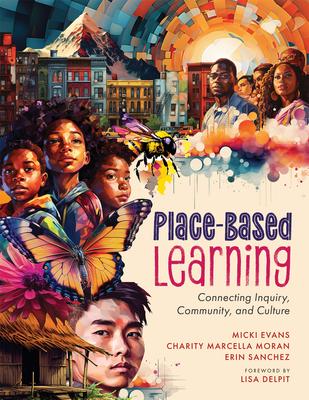Understand the impact a sense of place has on education, culture, and community. The authors share seven place-based learning design principles to help educators implement projects smoothly, from start to finish. With their project-planning tools and community asset map, teachers, school coaches, and leaders will be equipped to empower students and promote equity for all.
Grades 4-12 teachers, Iinstructional designers and school leaders will:
- Learn the seven place-based learning design principles and apply them
- Understand what role maps and countermapping have in establishing a sense of place and how to map community's assets
- Build meaningful community partnerships with students using collaborative projects
- Empower students to confront inequitable societal structures
- Reflect on key takeaways and consider chapter-ending questions to further their place-based learning practice
Contents:
Foreword by Lisa Delpit
Introduction
Part One: Understand Place-Based Learning Design Principles
Chapter 1: Elevate Ways of Knowing
Chapter 2: Facilitate Purpose-Driven Inquiry
Chapter 3: Build Authentic Community Partnerships
Chapter 4: Empower Student Ownership
Chapter 5: Engage in Feedback, Revision, and Reflection
Chapter 6: Create an Authentic Community Product
Chapter 7: Embed Culture in Teaching and Learning
Part Two: Designing Place-Based Journeys
Chapter 8: Liberate Teaching Practices and Decolonize Curricula
Chapter 9: Unpack Biases and Assumptions and Uncover Community Assets
Chapter 10: Pathways to Liberatory and Decolonized Assessment Practices
Chapter 11: Plan Place-Based Learning Projects
Part 3: Supporting and Sustaining PBL Implementation With an Equity Lens
Chapter 12: Sustain Place-Based Learning Through the Practitioner's Round
Chapter 13: Dismantle the Barriers to Place-Based Learning
Chapter 14: Monitor and Assess the Efficacy of Place-Based Learning and Build Capacity
Epilogue
Appendix
References and Resources
Index
